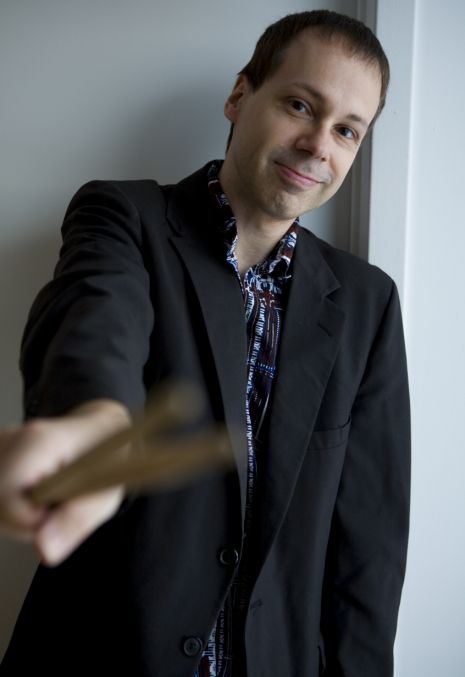Composer, Performer, Improvisor
—Irene Borger, Director, Herb Alpert Award in the Arts
Composers have advised me to stop wasting my time improvising and playing the drums, and improvisors have told me to stop doing something as passé as writing scores. My problem is, I really can't do one without the other; each one is a laboratory for the other. Composing is an exercise in control, composing for electronics is an exercise in even tighter control; collective improvisation is an exercise in the loss of control, and solo improvising is a constant teetering on the borderline between being lured by habits and trying to break them.
Composing is a medium for slowly made, carefully weighed decisions; improvising demands quick decision-making, but that does not mean decisions are made randomly or carelessly. As for being a performer, I believe that a unique, idiosyncratic language on an instrument is a huge advantage for an improvisor, who can then avail him - or herself - of this vocabulary when needed.
'm interested in incorporating composition and improvisation into the same piece; composing for improvisors permits me to avail myself of their vocabularies and to integrate into my piece types of expression that would be difficult to notate and would therefore lead to very stiff readings by interpreters. Sometimes I think of structures, melodies, etc. while improvising and end up using them in compositions; sometimes, the opposite happens. But I try to make my compositions sound composed and my improvisations sound improvised: in composing, I strive for a great amount of consequence in material and form, whereas in improvising I take a certain amount of disorder for granted and play at as high a risk as possible. Well...actually, I risk a lot when I compose, too.
While creating music, I think I often work from order to chaos, or from chaos to order. When writing, I often start with a simple idea and make it more and more complex as I go along. When improvising, I often start with something quite chaotic and then eliminate elements to make it simpler and more orderly. This is a generalization, because in many instances the exact opposite happens.
I love the simultaneity of order and chaos. For example, I could play the drums and a drum machine could play at the same time, and the drum machine could play a rhythm very precisely, and I could be playing the same rhythm but deliberately sloppily, and the result could be an interesting form of heterophony. Or I could program something totally wild into a drum machine - I prefer to use electronics for things humans alone could not do - but then this seemingly chaotic rhythm is repeated over and over again in a very orderly way.
Numerous extra-musical interests influence my work, but it is not easy to describe how this happens. I think a lot in terms of geometrical relationships, shapes, symmetries, and color, and have always been very interested in architecture and sculpture. My textural and timbral imagination is influenced by visual art, especially painting. I'm strongly inspired by atmospheres - the climate in a certain place, be it weather or political, the colors of sunset, a car approaching from far away at night, the headlights coming closer, and just as influenced by mathematics, especially fractal geometry.
I don't try to find an exact translation of fractal principles in my music, but the basic concepts somehow carry over into music: complex shapes, rugged coastlines, repetitive figures, self-similarity. Ethnomathematics is also important to me, and ties in with my interest in ethnomusicology. Ethnomathematics studies how mathematical phenomena are thought about in different cultures and how traditions use mathematical concepts like geometry, and how math can be taught by using skills acquired through traditional craftsmanship. In the end I think of music mainly in musical terms, imagining sound and or creating structures and trying to think what they will sound like.



